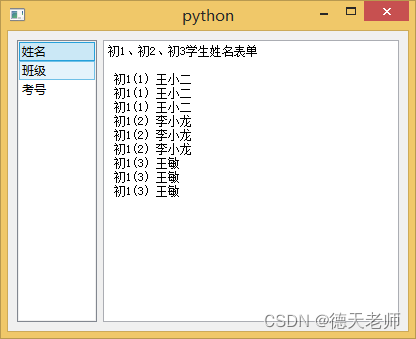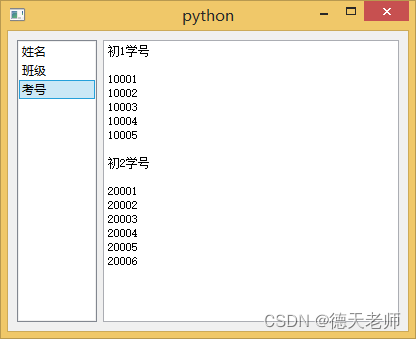实现目录与多行文本控件的链接
此案例可以实现电子书框架设计。



源代码展示
import sys
from PyQt5.QtWidgets import *
class MainWindow(QMainWindow):
def __init__(self):
super().__init__()
self.resize(400,300)
self.initUi()
#增加目录列表---姓名,班级,考号,每一行数据对应一个索引i
def initUi(self):
listWidget = QListWidget()
listWidget.setMaximumWidth(80)
listWidget.insertItem(0,'姓名')
listWidget.insertItem(1, '班级')
listWidget.insertItem(2, '考号')
# 点击当前目录列表项连接到对应项多行文本控件所在的槽函数,点击对应项发出数据当前行索引,i
listWidget.currentRowChanged.connect(self.cRChanged)












 订阅专栏 解锁全文
订阅专栏 解锁全文















 3万+
3万+











 被折叠的 条评论
为什么被折叠?
被折叠的 条评论
为什么被折叠?








